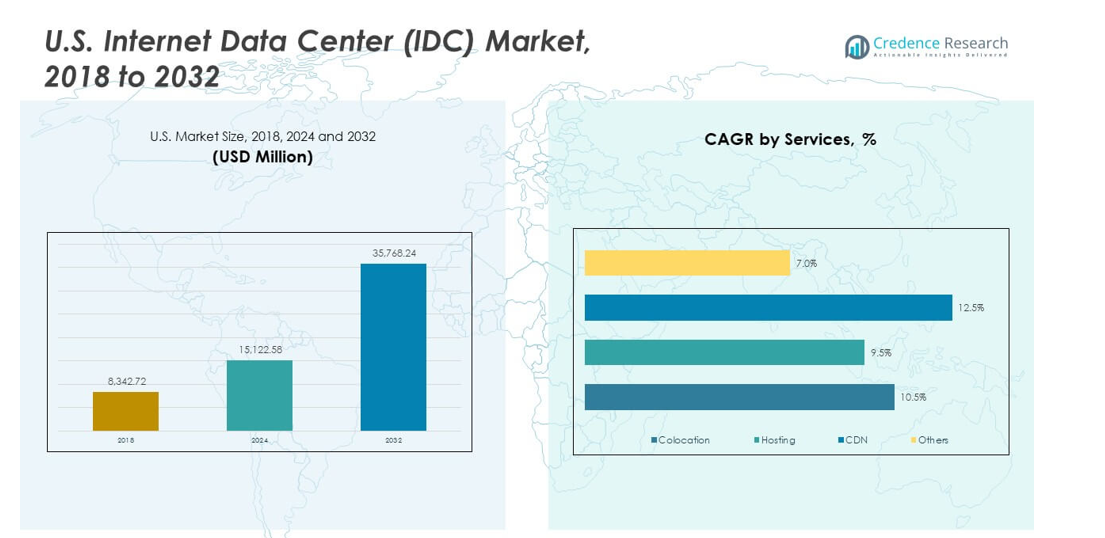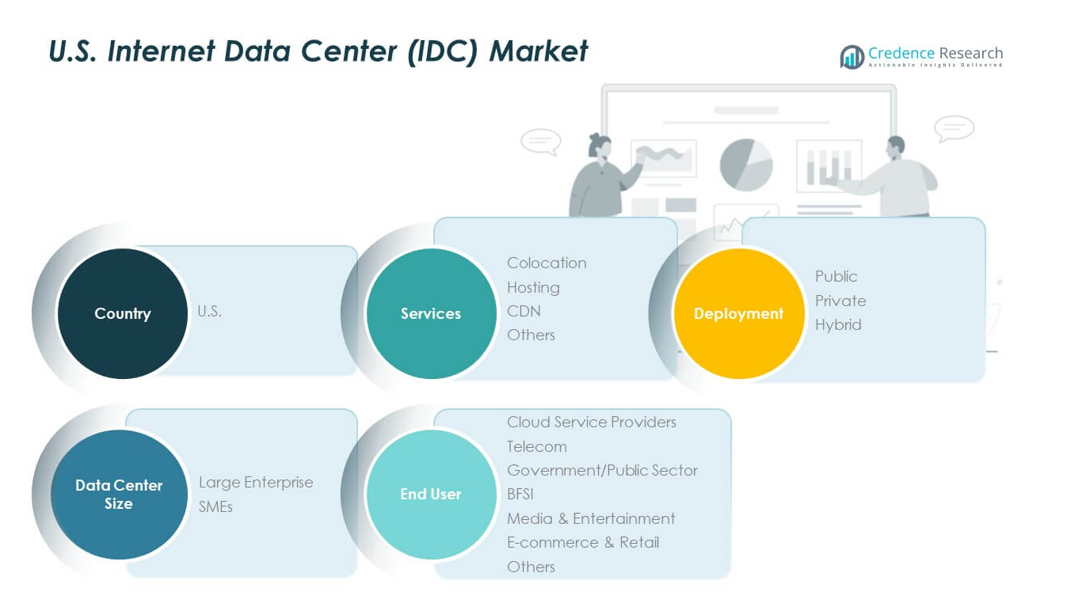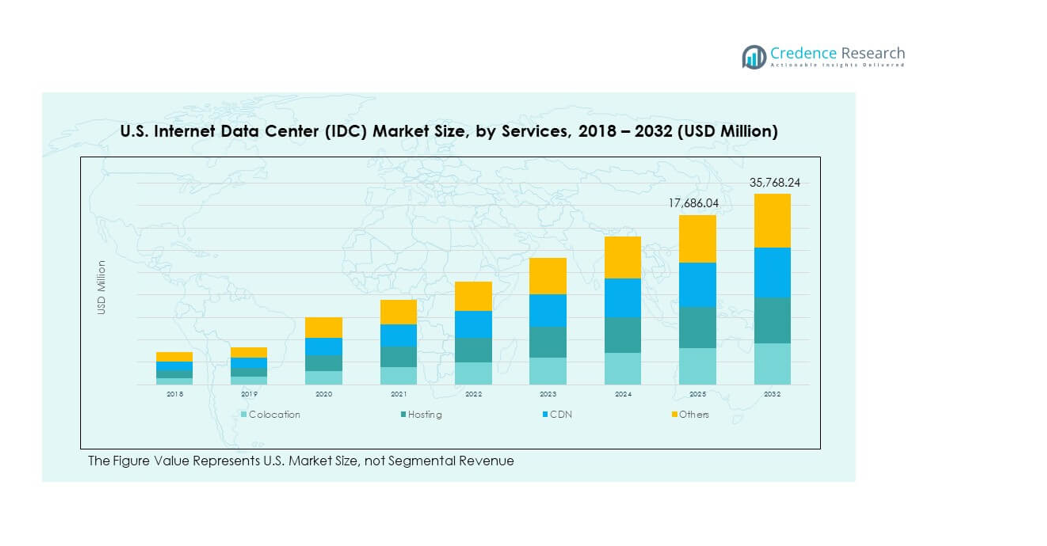CHAPTER NO. 1: GENESIS OF THE MARKET
1.1 Market Prelude – Introduction & Scope
1.2 The Big Picture – Objectives & Vision
1.3 Strategic Edge – Unique Value Proposition
1.4 Stakeholder Compass – Key Beneficiaries
CHAPTER NO. 2: EXECUTIVE LENS
2.1 Pulse of the Industry – Market Snapshot
2.2 Growth Arc – Revenue Projections (USD Million)
2.3. Premium Insights – Based on Primary Interviews
CHAPTER NO. 3: INTERNET DATA CENTER (IDC) MARKET FORCES & INDUSTRY PULSE
3.1 Foundations of Change – Market Overview
3.2 Catalysts of Expansion – Key Market Drivers
3.2.1 Momentum Boosters – Growth Triggers
3.2.2 Innovation Fuel – Disruptive Technologies
3.3 Headwinds & Crosswinds – Market Restraints
3.3.1 Regulatory Tides – Compliance Challenges
3.3.2 Economic Frictions – Inflationary Pressures
3.4 Untapped Horizons – Growth Potential & Opportunities
3.5 Strategic Navigation – Industry Frameworks
3.5.1 Market Equilibrium – Porter’s Five Forces
3.5.2 Ecosystem Dynamics – Value Chain Analysis
3.5.3 Macro Forces – PESTEL Breakdown
3.6 Price Trend Analysis
3.6.1 Country-wise Price Trend
3.6.2 Price Trend by Service
CHAPTER NO. 4: KEY INVESTMENT EPICENTER
4.1 Country-wise Goldmines – High-Growth Geographies
4.2 Service Frontiers – Lucrative Service Categories
4.3 Application Sweet Spots – Emerging Demand Segments
CHAPTER NO. 5: REVENUE TRAJECTORY & WEALTH MAPPING
5.1 Momentum Metrics – Forecast & Growth Curves
5.2 Country-wise Revenue Footprint – Market Share Insights
5.3 Segmental Wealth Flow – Services & Data Center Size Revenue
CHAPTER NO. 6: TRADE & COMMERCE ANALYSIS
6.1. Import Analysis by Country
6.1.1. U.S. Internet Data Center (IDC) Market Import Volume By Country
6.2. Export Analysis by Country
6.2.1. U.S. Internet Data Center (IDC) Market Export Volume By Country
CHAPTER NO. 7: COMPETITION ANALYSIS
7.1. Company Market Share Analysis
7.1.1. Internet Data Center (IDC) Market: Company Market Share
7.1. U.S. Internet Data Center (IDC) Market Company Volume Market Share
7.2. U.S. Internet Data Center (IDC) Market Company Revenue Market Share
7.3. Strategic Developments
7.3.1. Acquisitions & Mergers
7.3.2. New Service Launch
7.3.3. Country-wise Expansion
7.4. Competitive Dashboard
7.5. Company Assessment Metrics, 2024
CHAPTER NO. 8: INTERNET DATA CENTER (IDC) MARKET – BY SERVICES SEGMENT ANALYSIS
8.1. Internet Data Center (IDC) Market Overview by Services Segment
8.1.1. Internet Data Center (IDC) Market Volume Share By Services
8.1.2. Internet Data Center (IDC) Market Revenue Share By Services
8.2. Colocation
8.3. Hosting
8.4. CDN
8.5. Others
CHAPTER NO. 9: INTERNET DATA CENTER (IDC) MARKET – BY DEPLOYMENT SEGMENT ANALYSIS
9.1. Internet Data Center (IDC) Market Overview by Deployment Segment
9.1.1. Internet Data Center (IDC) Market Volume Share By Deployment
9.1.2. Internet Data Center (IDC) Market Revenue Share By Deployment
9.2. Public
9.3. Private
9.4. Hybrid
CHAPTER NO. 10: INTERNET DATA CENTER (IDC) MARKET – BY DATA CENTER SIZE SEGMENT ANALYSIS
10.1. Internet Data Center (IDC) Market Overview by Data Center Size Segment
10.1.1. Internet Data Center (IDC) Market Volume Share By Data Center Size
10.1.2. Internet Data Center (IDC) Market Revenue Share By Data Center Size
10.2. Large Enterprise
10.3. SMEs
CHAPTER NO. 11: INTERNET DATA CENTER (IDC) MARKET – BY END USER SEGMENT ANALYSIS
11.1. Internet Data Center (IDC) Market Overview by End User Segment
11.1.1. Internet Data Center (IDC) Market Volume Share By End User
11.1.2. Internet Data Center (IDC) Market Revenue Share By End User
11.2. Cloud Service Providers
11.3. Telecom
11.4. Government/Public Sector
11.5. BFSI
11.6. Media & Entertainment
11.7. E-commerce & Retail
11.8. Others
CHAPTER NO. 12: INTERNET DATA CENTER (IDC) MARKET – COUNTRY-WISE ANALYSIS
12.1. Internet Data Center (IDC) Market Overview by Country Segment
12.1.1. U.S. Internet Data Center (IDC) Market Volume Share By Country
12.1.2. U.S. Internet Data Center (IDC) Market Revenue Share By Country
12.1.3. Country
12.1.4. U.S. Internet Data Center (IDC) Market Volume By Country
12.1.5. U.S. Internet Data Center (IDC) Market Revenue By Country
12.1.6. Services
12.1.7. U.S. Internet Data Center (IDC) Market Volume By Services
12.1.8. U.S. Internet Data Center (IDC) Market Revenue By Services
12.1.9. Deployment
12.1.10. U.S. Internet Data Center (IDC) Market Volume By Deployment
12.1.11. U.S. Internet Data Center (IDC) Market Revenue By Deployment
12.1.12. Data Center Size
12.1.13. U.S. Internet Data Center (IDC) Market Volume By Data Center Size
12.1.14. U.S. Internet Data Center (IDC) Market Revenue By Data Center Size
12.1.12. End User
12.1.13. U.S. Internet Data Center (IDC) Market Volume By End User
12.1.14. U.S. Internet Data Center (IDC) Market Revenue By End User
CHAPTER NO. 13: COMPANY PROFILES
13.1. CyrusOne
13.1.1. Company Overview
13.1.2. Service Portfolio
13.1.3. Financial Overview
13.1.4. Recent Developments
13.1.5. Growth Strategy
13.1.6. SWOT Analysis
13.2. CoreSite
13.3. Amazon Web Services (AWS)
13.4. Google LLC
13.5. Microsoft Corporation
13.6. Company 6
13.7. Company 7
13.8. Company 8
13.9. Company 9
13.10. Company 10
13.11. Company 11
13.12. Company 12






